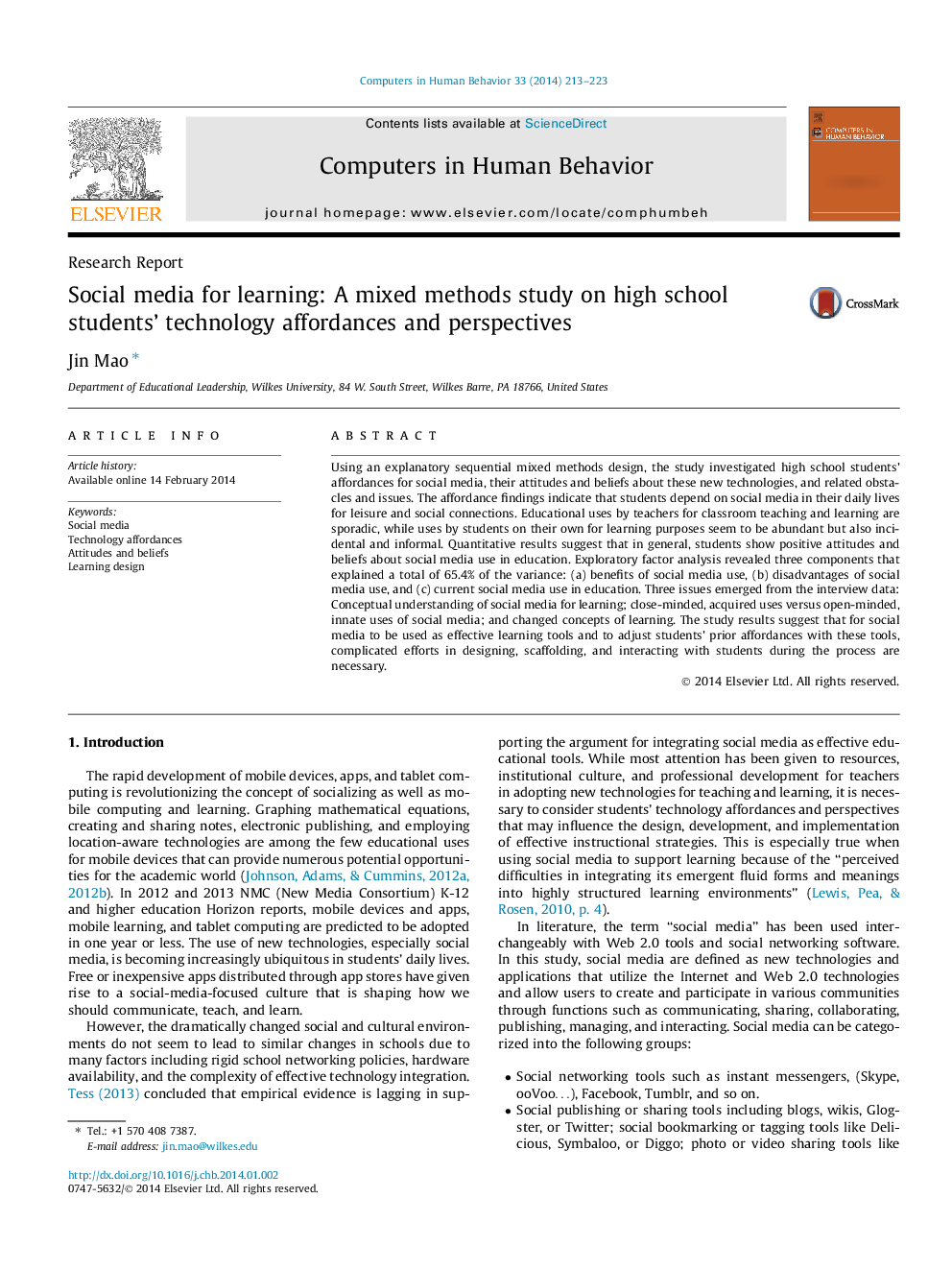| Article ID | Journal | Published Year | Pages | File Type |
|---|---|---|---|---|
| 6839286 | Computers in Human Behavior | 2014 | 11 Pages |
Abstract
Using an explanatory sequential mixed methods design, the study investigated high school students' affordances for social media, their attitudes and beliefs about these new technologies, and related obstacles and issues. The affordance findings indicate that students depend on social media in their daily lives for leisure and social connections. Educational uses by teachers for classroom teaching and learning are sporadic, while uses by students on their own for learning purposes seem to be abundant but also incidental and informal. Quantitative results suggest that in general, students show positive attitudes and beliefs about social media use in education. Exploratory factor analysis revealed three components that explained a total of 65.4% of the variance: (a) benefits of social media use, (b) disadvantages of social media use, and (c) current social media use in education. Three issues emerged from the interview data: Conceptual understanding of social media for learning; close-minded, acquired uses versus open-minded, innate uses of social media; and changed concepts of learning. The study results suggest that for social media to be used as effective learning tools and to adjust students' prior affordances with these tools, complicated efforts in designing, scaffolding, and interacting with students during the process are necessary.
Related Topics
Physical Sciences and Engineering
Computer Science
Computer Science Applications
Authors
Jin Mao,
